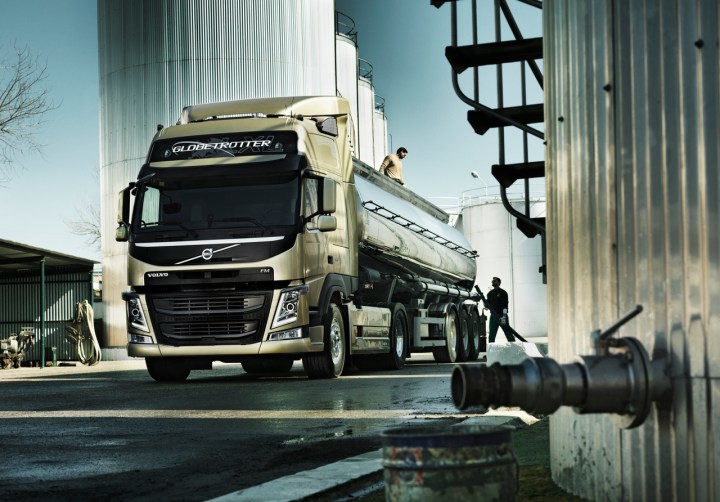
But as autonomous driving systems advance and even seem poised to replace human drivers in the coming decades, researchers are investigating the most efficient ways for vehicles to travel, particularly when they aren’t prone to human error.
Now, a team of researchers from the Massachusetts Institute of Technology (MIT) have looked at the trucking industry and found that simple platooning formations and proximity driving prove to be the most cost- and energy-efficient techniques.
“We were able to establish that, with little loss in transportation delays, there are a lot of energy savings, hence reduction in fuel costs and emissions,” Professor Sertac Karaman, who co-authored a paper on the study, told Digital Trends.
Along with graduate students Aviv Adler and David Miculescu, Karaman created a mathematical model to test how various scheduling policies can effect fuel consumption and timing of deliveries. They analyzed different scenarios — both simple and complex — including trucks leaving at regular intervals, staggered intervals, and driving in platoons of varying sizes.
“Our analysis showed that there are very simple strategies that attain very good performance,” Karaman said. “Specifically, we found that even simple time tables are almost as powerful as the most complicated control systems, which is a big surprise.”
More: Driverless trucks with humans onboard will be necessary, regulators say
In the future, the most efficient methods might not be safe or practical for human drivers, since driverless trucks may be able to travel at distances of just a few feet from each other. For this reason, Karaman and his team think autonomous driving systems may be better suited for such journeys. Still, the researchers acknowledge that is some years down the road.
“There is a lot of work that needs to be done toward enabling autonomous vehicles,” Karaman said. “However, there are certain technologies that can be brought to market quickly, and save a large amount on the costs. Platooning technology is one of them. We may see technologies that allows trucks to drive very close to each other, even if all the trucks are manned. This may still result in huge savings in fuel, with little impact on delays.”


